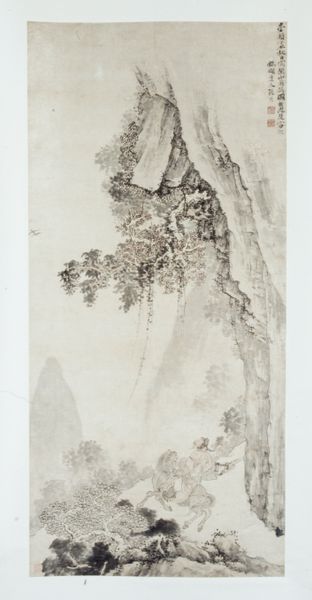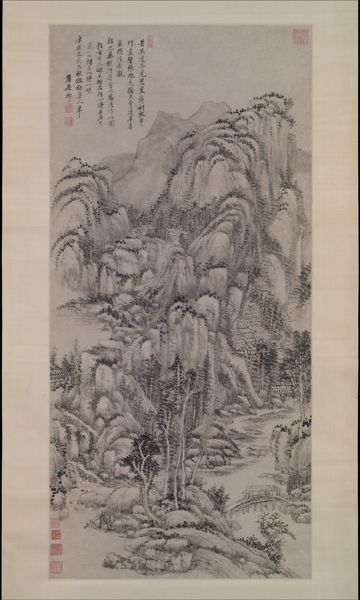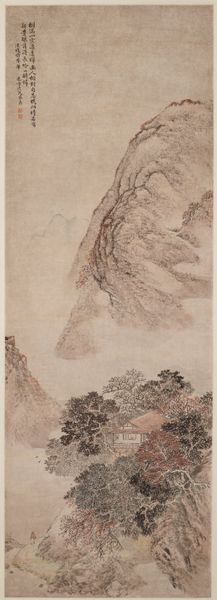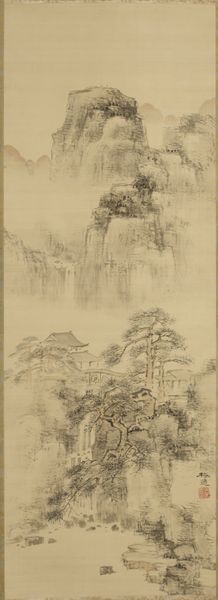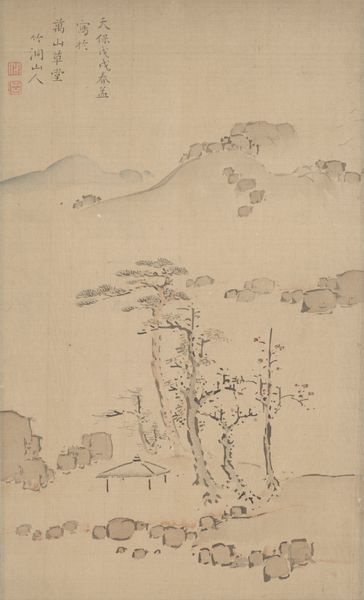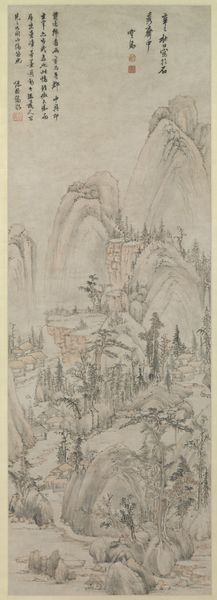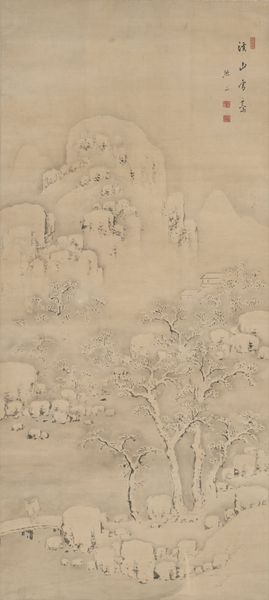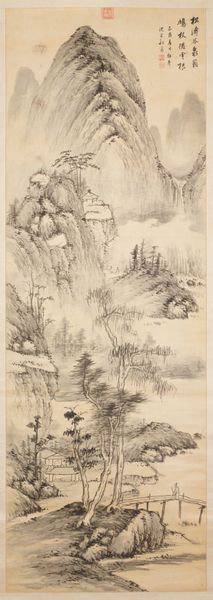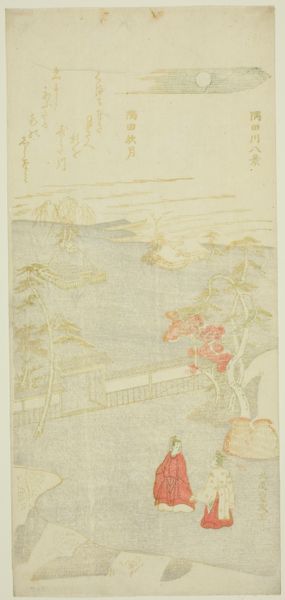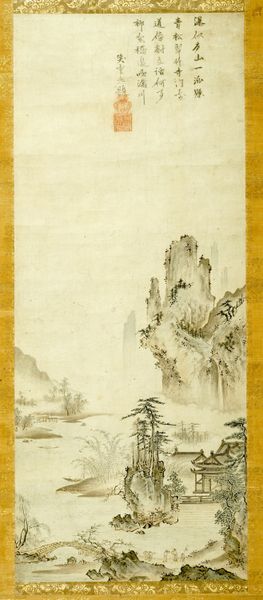
drawing, ink
#
drawing
#
ink painting
#
asian-art
#
landscape
#
ink
#
calligraphy
Dimensions: 55 3/4 x 20 in. (141.61 x 50.8 cm) (image)
Copyright: Public Domain
Editor: This ink drawing from 1844, “Autumn Thoughts on a Garden Landscape” by Nukina Kaioku, is so delicate. The washes of ink create a really atmospheric feel. I’m curious, what strikes you about this piece? Curator: It’s the deliberate labor, the very process of its making, that compels me. Kaioku's choices of ink and paper—materials sourced, prepared, and then carefully manipulated—tell a story of craft deeply intertwined with cultural values. Notice how the ink bleeds and feathers. What does that suggest about the paper and the consistency of the ink? Editor: That's interesting. I hadn't thought about the material properties affecting the outcome so directly. It does seem like he really understood his materials. The texture in the mountain suggests a coarser paper perhaps? Curator: Exactly. This suggests an awareness of how the material impacts the aesthetic and conveys meaning. It’s not simply about representing a landscape, it’s about the act of representation, of using readily available means to create something culturally valuable, while maybe alluding to traditional craft. Think about how the context—where these materials were sourced and by whom—influences how we should interpret its intention. Editor: So, you’re saying the value of the work isn’t just in the image but in understanding the cultural context of its creation, and who would have consumed it? How its materials were part of daily life? Curator: Precisely. And to consider how Kaioku is perhaps recontextualizing, critiquing, or affirming social values through his material choices and application. It moves us away from only regarding ‘fine art’ and asks us to value the materiality and labor, much like in any other craft. Editor: That gives me a completely different perspective. I was so focused on the visual, I hadn’t considered the deeper connection to its production and social life. Thanks, that's incredibly helpful. Curator: Absolutely. Looking at art through the lens of materials, labor, and consumption can reveal a richer, more complex narrative.
